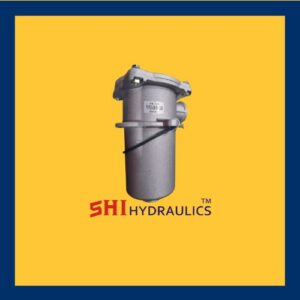Key Components of a Filter Element
- Filter Media:
- The core material that captures contaminants.
- Common materials include paper, synthetic fibers, wire mesh, or pleated membranes.
- Media type determines the filtration efficiency and compatibility with different fluids or gases.
- Support Structure:
- Provides rigidity and durability to the filter element.
- Includes perforated metal cores, wire mesh, or plastic frames to support the filter media.
- End Caps:
- Securely seal the ends of the filter element.
- Made from metal, plastic, or composite materials, ensuring compatibility with the operating environment.
- Seal or Gasket:
- Prevents fluid bypass, ensuring that all fluid passes through the filter media.
- Commonly made from rubber, silicone, or elastomeric materials.
Types of Filter Elements
Filter elements are categorized based on their application and filtration mechanism:
- Hydraulic Filter Elements:
- Used in hydraulic systems to remove dirt, metal shavings, and other contaminants.
- Protect components like pumps, valves, and cylinders from wear and tear.
- Air Filter Elements:
- Designed to filter particulates from the air in engines, HVAC systems, or industrial applications.
- Protect machinery and improve air quality.
- Fuel Filter Elements:
- Clean fuel before it reaches the engine or equipment, preventing clogging and ensuring efficient combustion.
- Oil Filter Elements:
- Remove impurities from lubricating oils, ensuring smooth operation and reducing wear.
- Water Filter Elements:
- Eliminate sediments, chlorine, and impurities from water for drinking, industrial, or agricultural use.
- Gas Filter Elements:
- Used in gas pipelines or systems to remove particulates or moisture.
Functions and Benefits
- Contaminant Removal:
- Traps unwanted particles, extending the lifespan of machinery and systems.
- Improved Efficiency:
- Ensures clean fluid or air flow, optimizing performance.
- Reduced Maintenance Costs:
- Prevents damage to system components, minimizing repair or replacement expenses.
- Enhanced Reliability:
- Maintains consistent system performance, reducing the risk of breakdowns.
- Environmental Protection:
- Helps in reducing emissions and waste, supporting sustainability efforts.
Materials Used in Filter Elements
- Cellulose:
- Cost-effective and commonly used for basic filtration needs.
- Synthetic Fibers:
- Offer high filtration efficiency and durability.
- Metal Mesh:
- Suitable for high-pressure or high-temperature applications.
- Ceramics:
- Used for fine filtration in extreme environments.
- Activated Carbon:
- Adsorbs odors, chemicals, and impurities, often used in air or water filtration.
Applications of Filter Elements
- Automotive:
- Fuel, oil, and air filters for cars, trucks, and heavy machinery.
- Industrial:
- Filtration systems in manufacturing, power plants, and chemical processing.
- Hydraulic Systems:
- Critical in construction, agriculture, and industrial equipment.
- Food and Beverage:
- Ensures purity in water, beverages, and edible oils.
- Aerospace:
- Protects aircraft engines and hydraulic systems.
Maintenance and Replacement
Regular maintenance and timely replacement of filter elements are crucial to ensure optimal system performance. Key practices include:
- Monitoring Performance:
- Check for pressure drops or reduced efficiency, indicating a clogged filter.
- Scheduled Replacement:
- Replace filter elements based on manufacturer recommendations or operating conditions.
- Inspection:
- Regularly inspect filters for damage or wear.
- Proper Disposal:
- Dispose of used filter elements responsibly to minimize environmental impact.
Innovations in Filter Element Design
- Nanotechnology:
- Nanofiber media enhances filtration efficiency for ultrafine particles.
- Reusable Filters:
- Washable and reusable elements reduce waste and lifecycle costs.
- Smart Filters:
- Embedded sensors monitor filter condition and notify users of maintenance needs.
- Eco-Friendly Materials:
- Biodegradable or recyclable filter media reduce environmental impact.






